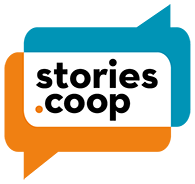In 1955, the Andalucían province of Almería, in southeastern Spain, was a drought-ridden area with little infrastructure and a GDP per capita of less than half the national average. Most residents who had not already fled in search of better opportunities were merely subsisting. Today, it is the top Spanish fruit and vegetable growing area with an income among the wealthiest third of Spanish provinces in GDP per capita. This turnaround from destitute province to agricultural co-operative industrial district or cluster is a unique case as it was not born from huge industry. Almerías average landholding is still only 1.5 hectares (roughly the size of two soccer fields), and most are held by the provinces 13,500 small-scale or family farmers who utilize greenhouses. Almerías rapid rise is the story of two interlinked co-operative institutionsits co-operative bank and its co-operatively organized farmers and their related organisations.
Francos dictatorial regime initiated development efforts in the 50s and 60s by rolling out an electrification plan and installing water pumps that utilized underground water to lure farmers to a rudimentary farming system meant to increase agricultural production in the area. However, it was an exploitive arrangement, environmentally unsustainable and designed to ensure that farmers would continue to be subsistence farmers and cheap labour for others. Outside buyers offered abusive prices. Price fixing auction houses sprang up. Farmers found it extremely difficult to obtain credit. Frustrated by lack of transparency and stymied opportunities for growth, several Almería locals formed the credit co-operative Caja Rural Provincial de Almería in 1963 (now Cajamar).
Although Cajamar provided financing, more importantly it acted as a catalyst in building organizational strength, providing the means by which poor farmers could turn their labour into something of value. Initially the co-operative bank offered unsecured loans and thus it had a crucial interest in making sure the agricultural co-operatives activities were worth financing. Absent channels to directly export product, COEXPHAL (the association of co-operatives and producer organisations) was formed in 1977 with the support of Cajamar in order to give farmers access to external markets.
The initial catalyst role of Cajamar and the co-operatives grew into strategic sector level innovation. In the 1970s, experimental farms were set up to test, develop and share the results of new agricultural technologies such as improved greenhouse design and new irrigation techniques, essentially transferring the financial risk of innovation from the farmer to the credit co-operative. Almería cooperatives responded to new challenges brought about by globalization by investing further in R+D+i: sustainable greenhouses, biological crop control, genome research, shorter supply chains and renewable energy.
The synergies created by the different co-operative institutions have allowed Almerías agricultural and credit co-operatives to thrive: Cajamar is now Spains largest co-operative bank, and the farming area is now the largest co-operative vegetable growing area in Europe, with the majority of cooperatives using biological pest control.
Although an agricultural production of 2.5 million tons and a turnover of 1.8 billion Euros is impressive, what is most striking is the direct employment provided to more than 40,000 workers, with an equitable distribution of wealth generated in the region. More than 250 complementary or auxiliary businesses, both cooperative and investor owned have been created with a turnover of more than 1,500 million Euros.
This story was made possible through research carried out by Cynthia Giagnocavo, David Uclés Aguilera and Luis Fernández-Revuelta Pérez published as: Giagnocavo, C. et al (2012, forthcoming) The case for proactive cooperative banks in local development: innovation, growth, and community building in Almería, Spain in Goglio, S. and Alexopoulos, Y. Eds., Financial Cooperatives and Local Development., (London: Routledge).
